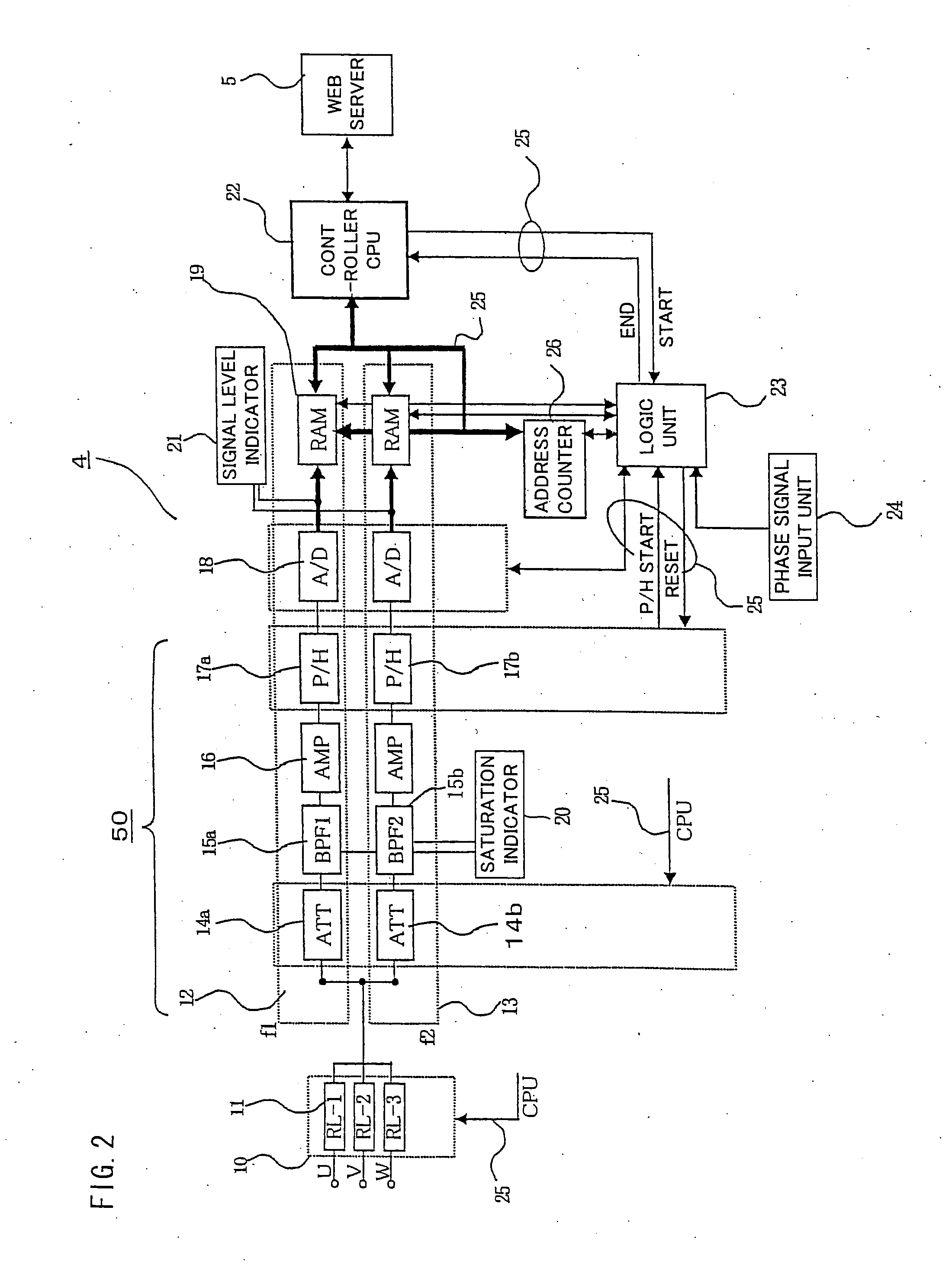Partial discharge monitoring apparatus and partial discharge remote monitoring system for rotating electric machines
- Summary
- Abstract
- Description
- Claims
- Application Information
AI Technical Summary
Benefits of technology
Problems solved by technology
Method used
Image
Examples
first embodiment
[0032]FIG. 1 is a diagram showing the configuration of a partial discharge remote monitoring system 100 for explaining a partial discharge monitoring apparatus 4 according to a first embodiment of the invention. The partial discharge remote monitoring system 100 is, for example, a system for remotely monitoring the state of insulation of a rotating electric machine 1, such as a turbine generator, installed in a thermal power plant 9. In this system, signals output from partial discharge sensors 2 which are located in the rotating electric machine 1 are led to the exterior of the generator through a terminal box 3 and input into the partial discharge monitoring apparatus 4. The partial discharge monitoring apparatus 4 transmits and receives information to and from a monitoring server 8 located at a supervisory control center 7 which performs centralized supervisory control of various devices installed in multiple power plants, for example, via a web server 5 and the Internet 6.
[0033...
second embodiment
[0061]FIG. 9 is a flowchart showing an automatic measurement range setting procedure of a second embodiment by which the measurement range is automatically set in accordance with detected signal levels. The controller CPU 22 automatically sets the attenuator 14a for the frequency band f1 by the following operation flow.
[0062] Step 1: Signals are measured for 1 second.
[0063] Step 2: The controller CPU 22 stores measured data in the RAM 19.
[0064] Step 3: The controller CPU 22 reads out the data stored in the RAM 19.
[0065] Step 4: The controller CPU 22 removes noise by the aforementioned two-frequency correlation noise removal method of the first embodiment.
[0066] Step 5: The controller CPU 22 determines the level at which partial discharge pulses occur at a frequency of 60 pps where the commercial frequency is 60 Hz (50 pps where the commercial frequency is 50 Hz) by calculation.
[0067] Step 6: The controller CPU 22 compares the level of 60 pps with a 40% level of the current mea...
third embodiment
[0083] A third embodiment of the invention employs a configuration which makes it possible to vary the signal detection levels 33 of the peak hold circuits 17a, 17b based on partial discharge data obtained in the aforementioned measurement range setting procedure. Here, the most preferable ratio of varying the signal detection level 33 is 50% of the value of the signal detection level 33 at which partial discharges are detected at a frequency of 60 pps. If the value of the signal detection level 33 at which partial discharges are detected at a frequency of 60 pps is 70 mV when the measurement range is 0 to 100 mV, for example, the signal detection level 33 is set to 35 mV so that pulses lower than 35 mV would not be peak-held. In a case where partial discharges occur intermittently and the levels of the detected pulses exceed the measurement range at a frequency of 10 pps, the controller CPU 22 alters the value of the signal detection level 33 (which is 40 mV in this case) for detec...
PUM
 Login to View More
Login to View More Abstract
Description
Claims
Application Information
 Login to View More
Login to View More - R&D
- Intellectual Property
- Life Sciences
- Materials
- Tech Scout
- Unparalleled Data Quality
- Higher Quality Content
- 60% Fewer Hallucinations
Browse by: Latest US Patents, China's latest patents, Technical Efficacy Thesaurus, Application Domain, Technology Topic, Popular Technical Reports.
© 2025 PatSnap. All rights reserved.Legal|Privacy policy|Modern Slavery Act Transparency Statement|Sitemap|About US| Contact US: help@patsnap.com



